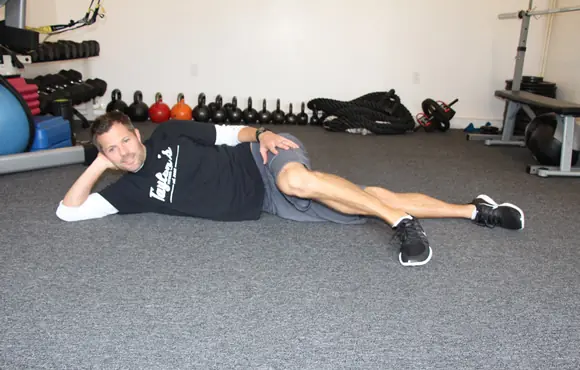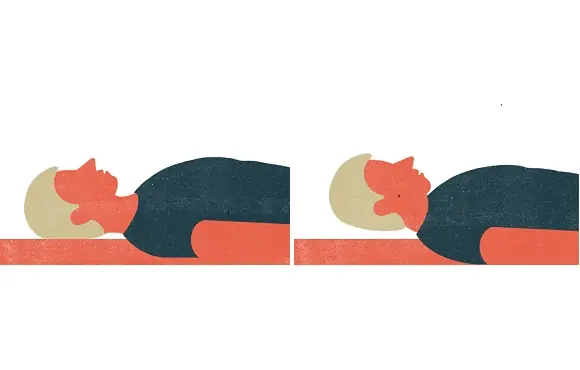Focus on Running
First and foremost -- I suppose this goes without saying, but -- you've got to run every day, or just about. I'm not saying you can become an overcoming runner and still keep progressing as a swimmer or cyclist. You'll have to throttle back on the other activities.
Cross-training is good; however, the best runners don't cross-train much. They're running from 120 to 160 miles per week, and that doesn't leave a lot of time for other stuff.
No, you don't have to cease the other activities. However, you're going to be running no less than 35 miles per week, and as much as 50 and 60 miles per week. So, some of the swimming and most of the cycling has got to give. No problem. You can pick your cycling back up quickly, within a few weeks, and still keep your newly gained running speed.
You don't have to run 5 to 7 days per week -- but you do if you want to reach your running potential. No other way around it. You'll actually run more than once each day, on average. That's because you'll run twice a day on certain days.
More: How to Boost Your Energy
Double Duty
I try to run two-a-days 4 to 5 days a week when I'm engaged in a serious running campaign. What that means is, I actually perform a two-a-day once or twice a week (I fall off the wagon). The nice thing about the discipline of this is that you know you can't run twice in a day if you don't run once in the morning. That makes you get out in the morning. So, worst case, you at least get that one run under your belt.
I can't tell you how much two-a-days help, and that's whether you're trying to pick up your run or your swim. Any swimmer who's achieved a high level of success would laugh at the idea of becoming really good without swimming twice each day.
Likewise with runners. Very few can become national caliber, let alone world class, without running twice a day. Many run three times daily. Therefore, throwing in that second run once, or twice, or even three times per week, will go a long way toward helping you hit your goal.
More: 3 Steps to Long-Run Recovery
Run Fast to Get Fast
You must run fast. Not every run. Not even every other run. Maybe not even in one run out of three. But, when you're going to run fast, it's got to be fast.
It's got to hurt. But here's the thing about hurting: This also is trained. The ability to withstand pain is trained. At the beginning of every season when I was a competitive runner, I was not only slow, I was a real wimp. My pain tolerance was untrained, and when those baroreceptors started firing I gave in quickly.
However, as I got faster, and my ability to perform increased, my ability to maintain a high pain threshold for a longer period of time also increased. However, the only way your pain tolerance increases is to put yourself in a place of pain.
Yes, you're doing this precisely at a time when you can least stand it, but you must just push through it the best you can. It'll get better.
Know When to Ease Up
Do what your body allows. Back in the old days, Steve Prefontaine, Rudy Chapa and Alberto Salazar trained under Bowerman and Dellinger, and the mantra in Oregon was "Hard/Easy." Every other day was hard, with an easy day in between.
This works. Remember, though: These were college kids, with a recovery ability that you may not have (and I surely don't have) depending on your age.
I find that for every hard day I need two easy days, on average. But this will vary. Sometimes I'll string two hard days in a row because my body is just ready for it. However, there will be other patches where my body just won't be ready for a hard effort, and it'll tell me so.
More: 4 Mental Tips for Long-Distance Runners
Don't misunderstand: There are times in the early season when my mind and my body are perfectly willing to go fast, but the fitness just isn't there. No problem. Go fast anyway, and do what you can.
That's different than a body that simply is tired, and worn, perhaps fighting off an infection, and just has no zip. If this is ever descriptive of a day in your running future, don't go fast. Do what your body wants. This may last a week, or even two. Even three. Don't worry. It'll come around again. Let it do so on its own schedule.
I've gone 20 consecutive days, minus a day off or two, without running faster than a slow jog. My body always came out of it, and usually with a bang.
How Fast Is Fast?
What do I mean when I write about your training, "You must run fast"? I mean :30 to 1:30 per mile faster than you can hold for, say, a 10K. And one thing I'll mention about fast running: Running fast is entirely different, qualitatively, from certain other hard efforts.
I love to engage in mountain runs. I love to find a 6% or 7% grade and slog up for an hour, maybe 5 miles or so, and then return. It's just about my favorite thing to do afoot, and I do it reasonably regularly. It makes me a stronger runner.
However, this is not the same as fast running, and it won't train you to run fast. If you want to run fast, you've got to run your fast runs -- tempo runs, fartlek, intervals -- on flat surfaces, with good footing.
The terrain on which to do a fast, hard run with the most effort is an entirely flat run, because there's nowhere to rest, nowhere to hide. These are the runs of truth, so you must practice running fast on this sort of terrain.
When I say "tempo run," I'm describing what others might call a threshold run. This is a simulated race as part of a workout. You won't run as hard in a tempo run as you would in a race -- that is, you won't go to the limit. But, you might run a 6-mile run and have the four middle miles be at a pace similar to your 10K pace. Or, you might warm up a bit and then go for 8 miles at your half-marathon pace.
That is separate from what running coaches call "anaerobic" work. Yes, threshold work has an anaerobic component to it, because you're lactic acid is not getting buffered at the same rate it is produced. However, it's not clearly, obviously, in-your-face anaerobic. When running specialists say "anaerobic" work, they mean running at a pace that'll make you clearly uncomfortable.
There are two general categories of anaerobic workouts: those that are incorporated into a road run, and those you do on the track or other closed course.
Fartlek workouts are fast sections of a road run interspersed with recovery sessions. For example, one minute on, one minute off. Or, it might be a minute on and two minutes off. Or, every other telephone pole is fast. Or, every other lifeguard station (if I'm running on the beach). The fast segment is going to be clearly faster than you can run for very long.
I usually prefer to run my anaerobic work on the track, because it's measurable, like swimming in a pool as opposed to open water. I might run 10x400 meters with a 400-meter jog in between, at a pace :30 per mile faster than I can run for a 10K. Or, 12x300m with a 100-meter walk in between, at a pace 40 seconds or even one minute faster per mile than my 10K pace.
More: Running and Breathing 101
Motor Learning
Why would one want to run this much faster than one's race pace? A couple of reasons. First, this is the best way to explain to your mitochondria what sort of work it is you want them to perform.
Second, there is an element of motor learning that you fast-forward when you run uncomfortably fast. A few days after such a workout you find you can run with much more economy -- and I use that term the way running coaches use it, not the way physiologists use it. By "running economy" I speak of an economy of form, not of oxygen consumption.
I would refrain from too many of these types of anaerobic workouts. They are ballistic on your legs, and should not in my opinion be engaged in unless you're really ready.
More: 10 Quick Fixes to Save Your Knees
Dan Empfield is the publisher of the online triathlon journal Slowtwitch.com, and is the founder of bike- and wetsuit-maker Quintana Roo.
 READ THIS NEXT: How to Run Faster
READ THIS NEXT: How to Run Faster
Connect with us on Twitter, Facebook, Instagram or Pinterest for more tips, recipes and ideas to fuel your ACTIVE life.
- 2
- of
- 2










Discuss This Article